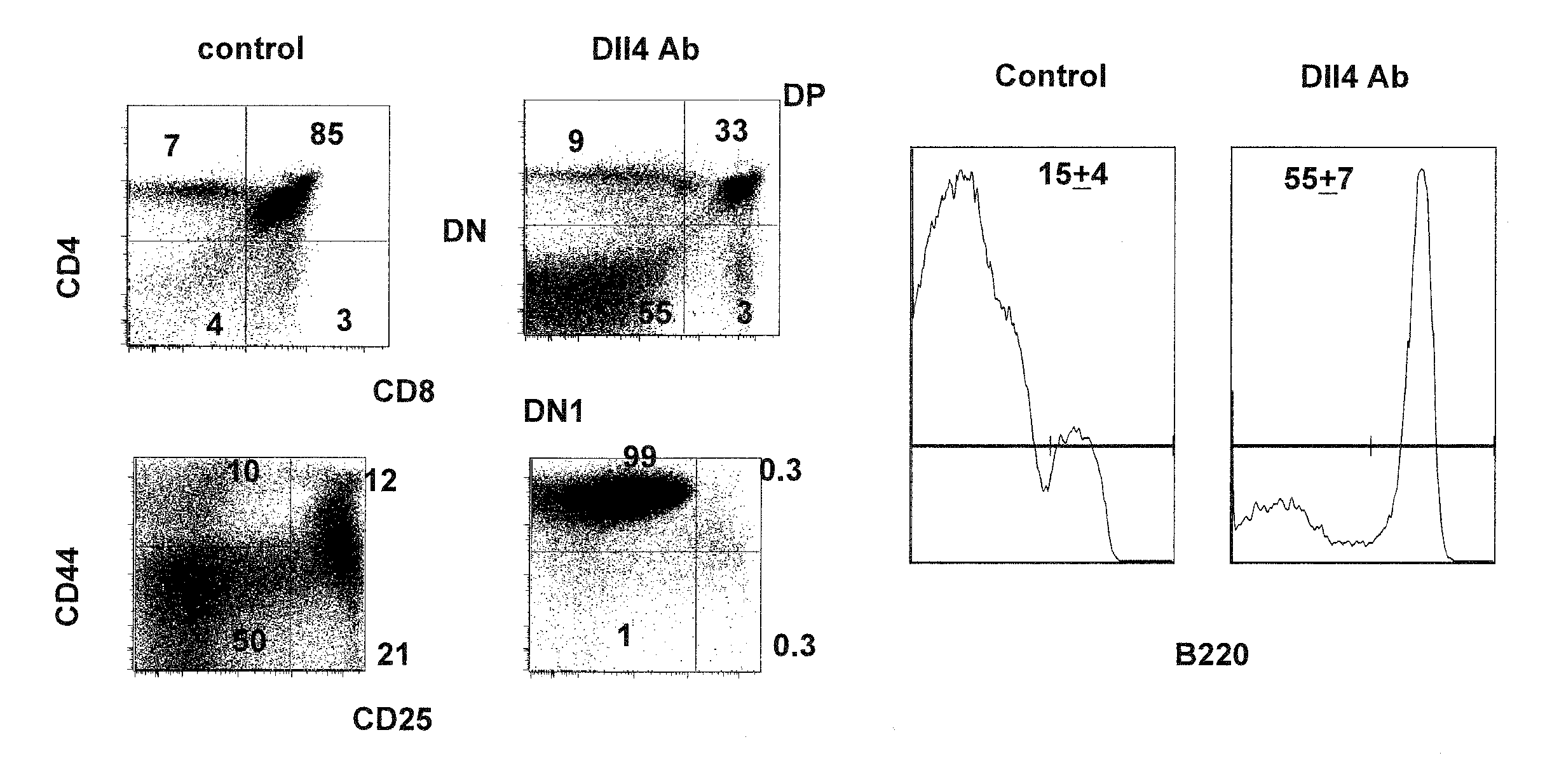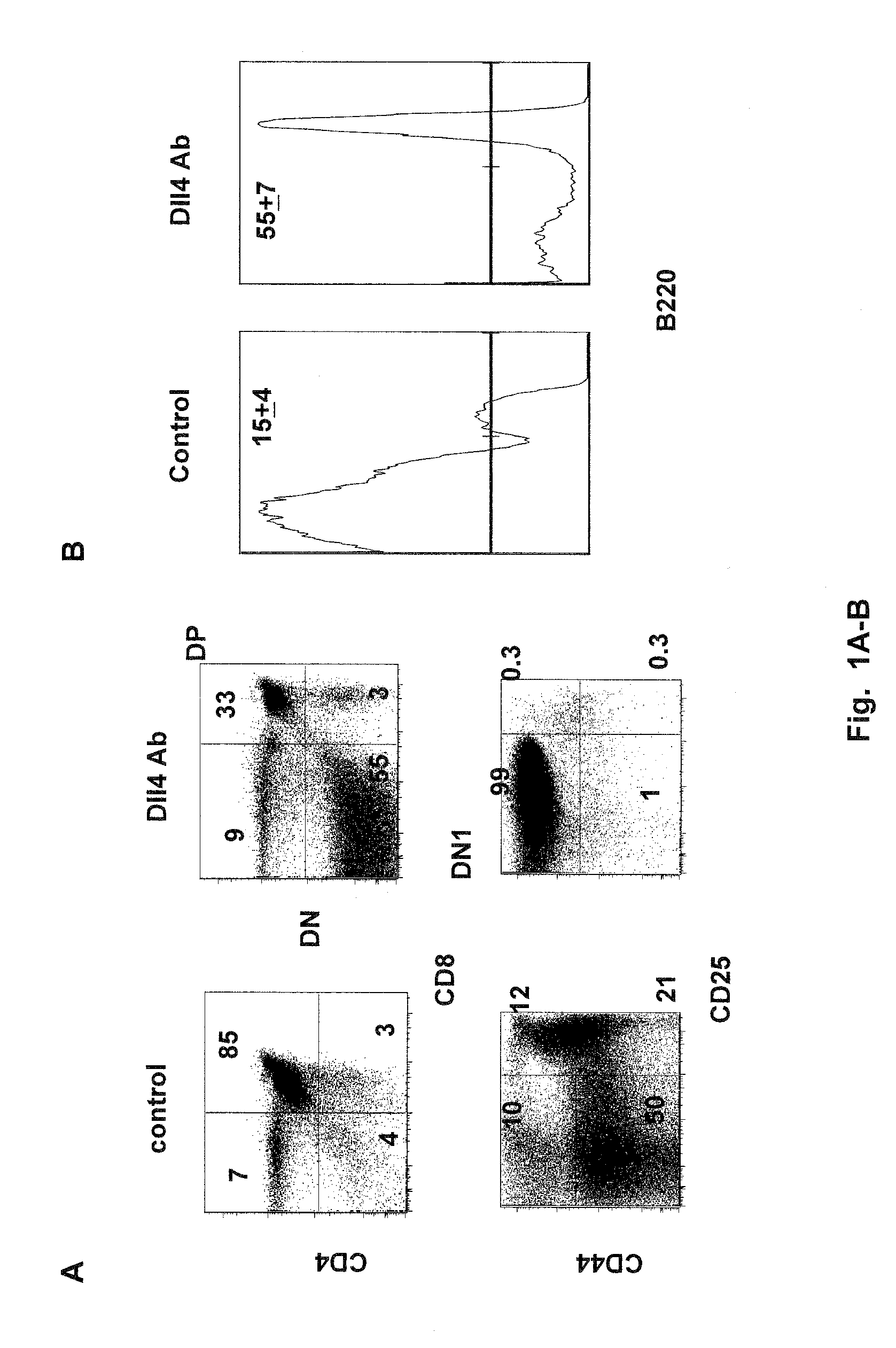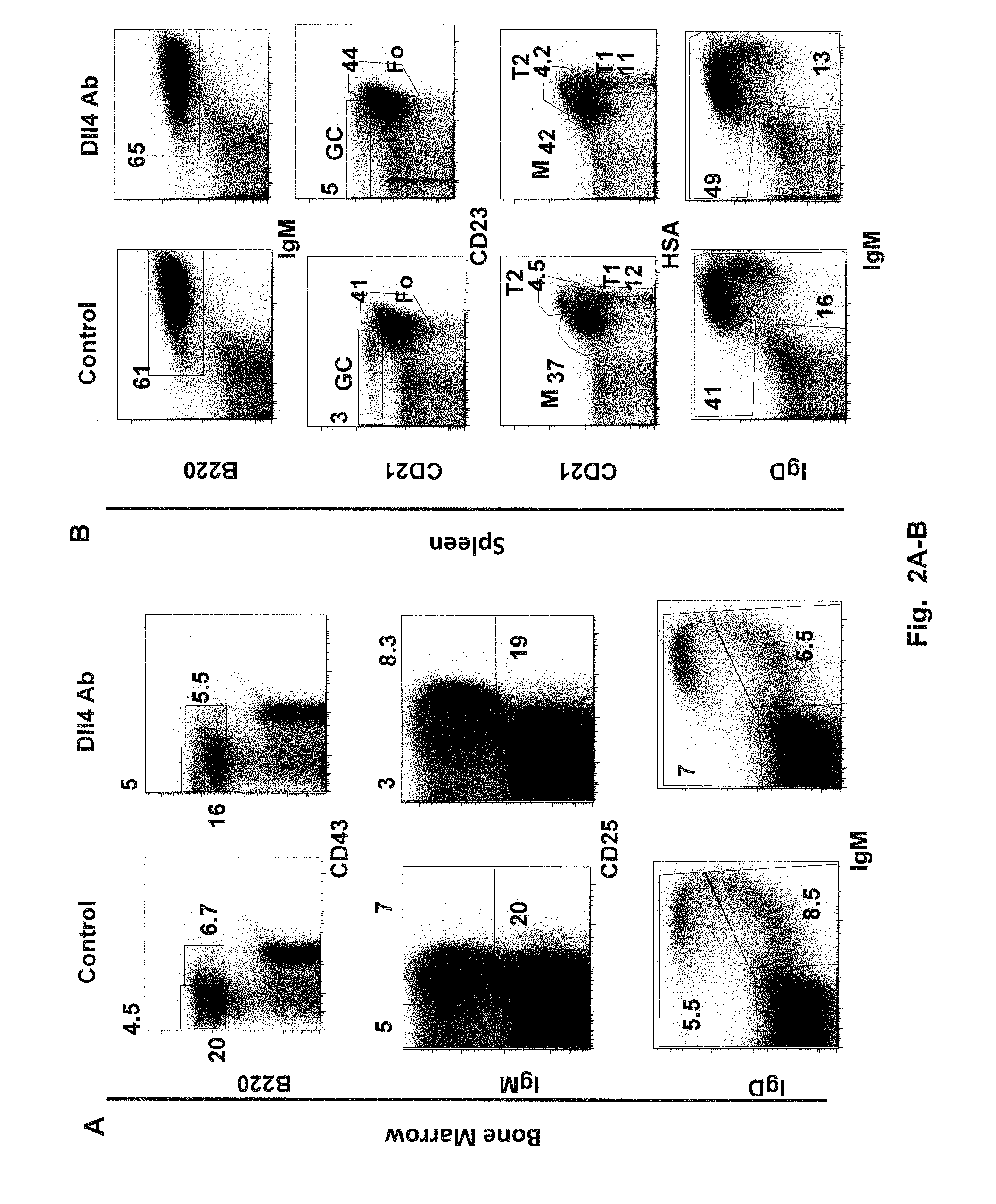Methods of treating autoimmune diseases with dll4 antagonists
a technology of dll4 and autoimmune diseases, applied in the field of methods of treating a disease, disorder, etc., can solve the problems of notch signaling in controlling the origin and development of dcs and consequently treg homeostasis is still unknown
- Summary
- Abstract
- Description
- Claims
- Application Information
AI Technical Summary
Benefits of technology
Problems solved by technology
Method used
Image
Examples
example 1
Effect of DII4 Blockade on Development of B Cells, Dendritic Cells and T Cells
[0072]It has been shown that DII4-Notch1 inhibition leads to a complete block in T cell development accompanied by ectopic appearance of B cells and an expansion of dendritic cells (DC) that can arise from Pro-T cell to DC fate conversion within the thymus (Hozumi et al. 2008, J Exp Med 205(11):2507-2513; Koch et al., 2008, J Exp Med 205(11):2515-2523; and Feyerabend et al. 2009, Immunity 30:1-13). It is, however, still unknown as to which specific stage of DC development is directly affected by the DII4 blockade.
[0073]To answer this question, 6 week-old C57B1 / 6 mice (Jackson Labs) were injected subcutaneously with 5 or 25 mg / kg of anti-DII4 Ab (REGN577) (n=5) or human Fc fragment (control) (n=5), twice a week for two weeks. REGN577 was prepared in-house based on the published sequence (WO 2007 / 143689). REGN 577 binds to human and mouse DII4, but does not detectably binds human DII1 and JAG1. Fourteen (14)...
example 2
Effect of DII4 Deletion on T Cell Development
[0081]To evaluate if the effect of DII4 on DC development observed in Example 1 above was intrinsic to DII4, DLL4COIN mice, in which DII4 is conditionally inactivated, were prepared. “Conditional-by-inversion (COIN)” alleles are conditional alleles that rely on an inversible element (“COIN element”) to provide recombinase-mediated conditional mutations. DLL4COIN mice contain a tamoxifen-inducible Cre recombinase construct, CreERT2, which encodes a Cre recombinase fused to a mutant estrogen ligand-binding domain (ERT2). CreERT2 is essentially inactive in the absence of tamoxifen and is also not activated by endogenous estrogens. Tamoxifen treatment of the mice will activate CreERT2 and cause the inversion of the COIN element, which abrogates the transcription of all exons downstream of the COIN insertion point, thereby knocking out DII4. For details of CreERT2 recombinase system, see Feil et al. 1997, Biochemical and Biophysical Research C...
example 3
Effect of DII4 Blockade or DII4 Deletion on Tregs Homeostasis
[0084]It has been recently shown that Tregs are essential for maintaining normal number of DCs. Upon Treg depletion there is a compensatory Fms-like tyrosine kinase 3 (Flt3)-dependent increase of DCs (Liu et al., 2009, supra). Furthermore, two independent groups showed a feedback control of regulatory T cell homeostasis by DCs in vivo; i.e., increasing the numbers of DCs leads to an increased Treg division and accumulation, which could prevent autoimmune disease development (Darrasse-Jeze G. et al., 2009, J. Exp. Med. 206(9):1853-1862; and Swee L K et al., 2009, Blood 113(25):6277-6287).
[0085]To determine if DII4 blockade could affect Treg homeostasis, Treg numbers in thymi of the mice treated with the DII4 Ab or human Fc (control) in Example 1 were measured by flow cytometry. As shown in FIG. 7A, DII4 blockade resulted in a robust expansion of Tregs within the thymus at day 14 after the initial injection. The expansion of...
PUM
| Property | Measurement | Unit |
|---|---|---|
| Fraction | aaaaa | aaaaa |
| Fraction | aaaaa | aaaaa |
| Fraction | aaaaa | aaaaa |
Abstract
Description
Claims
Application Information
 Login to View More
Login to View More - R&D
- Intellectual Property
- Life Sciences
- Materials
- Tech Scout
- Unparalleled Data Quality
- Higher Quality Content
- 60% Fewer Hallucinations
Browse by: Latest US Patents, China's latest patents, Technical Efficacy Thesaurus, Application Domain, Technology Topic, Popular Technical Reports.
© 2025 PatSnap. All rights reserved.Legal|Privacy policy|Modern Slavery Act Transparency Statement|Sitemap|About US| Contact US: help@patsnap.com



